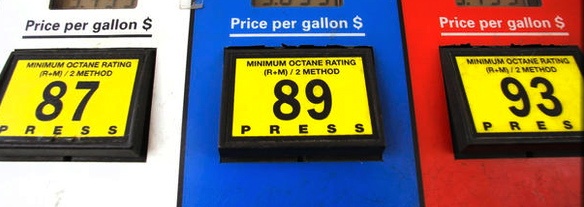Fuel prices fall amid COVID-19 pandemic; OPEC production cuts might not offset demand decline
by April 14, 2020 12:48 pm 743 views

Since the start of 2020, U.S. retail gasoline prices have fallen 28.3%, or 73 cents a gallon, as fuel demand has decreased during the COVID-19 (coronavirus) pandemic.
Meanwhile, a new agreement between the Organization of the Petroleum Exporting Countries (OPEC) and its partners is expected to contribute to cuts in crude oil production, but the decrease might not be enough to offset a decline in demand.
U.S. retail gasoline prices were an average of $2.58 per gallon in the first week of 2020, the highest price at the beginning of the year since 2014, according to the U.S. Energy Information Administration. As of April 13, the price had fallen to $1.85 per gallon, the lowest U.S. average gasoline price since early 2016. The price decline can be attributed to recent decreases in international benchmark Brent crude oil prices, reduced driving as a result of pandemic-related quarantines and social distancing.
Diesel prices also are falling, according to a recent Transport Topics article. The main fuel for the trucking industry fell about 4 cents to $2.50 per gallon and is now 61 cents per gallon less than what it was a year ago.
Crude oil comprises 43% of the cost of diesel fuel, and the cost of oil doesn’t look to rise soon, the article shows. Oil inventories are rising as a result of the pandemic and the recent decision by OPEC and the partners to lift production cuts. However, these oil-producing nations more recently said they will cut oil production by as much a 9.7 million barrels a day, a 13% reduction in global production.
But President Donald Trump noted on Twitter that the cuts would be 20 million barrels per day. The president also said the new deal would “save hundreds of thousands of energy jobs in the United States.”
Oil production has never been slashed this much this quickly, but the reduction won’t be enough to offset the decline in demand as a result of the pandemic, according to a recent American Shipper article. The cuts will reduce output by 9.7 million barrels per day between May and June, 7.7 million barrels per day from July to December and 5.8 million barrels per day from January to April 2021. However, the decline in demand as a result of COVID-19 is expected to exceed 20 million barrels per day.
Excess production is expected to lead to more crude oil tankers becoming floating storage, the article shows. This will reduce the number of vessels bidding for spot voyage deals and extending the historically high rates.
“In any other time, an output cut of this magnitude would be the death knell of the tanker industry,” said Evercore ISI analyst Jon Chappell, adding that because the reductions aren’t expected offset the demand decrease, inventories are expected to rise and lead to pressure on near-term prices and incentives for floating storage.
The proposed production cuts were followed by Saudi Arabia reducing pricing for May export cargoes, including reductions of $2.95 to $5.50 per barrel, from April prices for buyers in the Asia-Pacific region, the article shows.
Jefferies analyst Randy Giveans said this shows Saudi Arabia is focused on market share as it continues to export crude oil amid the expected cuts. Saudi Arabia didn’t cut prices for the United States and Europe to remain on the “good side of the Americans and Russians,” he added. “The focus is on selling additional barrels into the region that is actually ramping back up: Asia.”
The expected cuts are projected to slow an increase in inventory in May and June as the gap widens between the spot price of crude oil and its futures price, Giveans said. The futures price is expected to be higher than the spot price, indicating that it will rise, an occurrence referred to as a contango.
On-land storage facilities are expected to reach capacity in the second quarter, said Frode Morkedal, managing director of research at Clarksons Platou Securities. This should contribute to an increased need for floating storage.
“We expect this will maintain a higher level of inquiry in the tanker market, supporting tanker rates at healthy levels,” Morkedal said. “However, a drop in crude oil production of 9.7 million (barrels per day) is extremely significant given that the [global] crude-oil tanker trade is 40 million (barrels per day.) Without the contango and the need for floating storage, this type of cut would have an overwhelmingly negative effect on tanker demand and charter rates. Accordingly, we see near-term support for tankers but major questions as we approach the second half of 2020 and 2021.”
The U.S. Department of Energy announced Tuesday (April 14) it was negotiating with nine U.S. companies to store their U.S. produced crude oil in the Strategic Petroleum Reserve. On April 2, the DOE asked for proposals from companies to allow for the temporary storage of their oil in the Strategic Petroleum Reserve. The companies look to store nearly 23 million barrels of crude oil, which would be distributed into all four Strategic Petroleum Reserve sites. The deliveries are expected to take place from April to June, and the companies can recover their oil through March 2021, minus an amount of oil to cover the storage cost.
“When producing oil you have two options — you either use it or you store it,” said U.S. Secretary of Energy Dan Brouillette. “With the impacts caused by the COVID-19 pandemic, we are seeing an enormous decrease in demand as our country works to contain the virus. This is why making storage capacity available in the SPR is so important. Providing our storage for these U.S. companies will help alleviate some of the stress on the American energy industry and its incredible workforce.”
